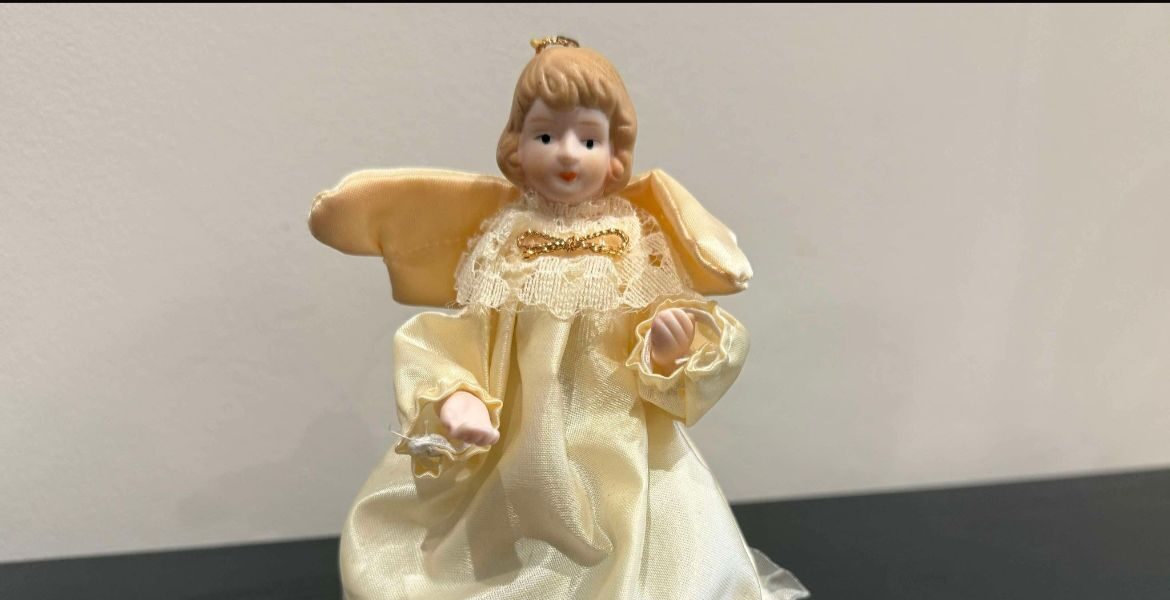Week 6: The Magic of the Ugly Favourite
So far this season we’ve survived missing Tupperware lids (chaos management), pens (micro-trust), cancelling plans (energy economics), talking to strangers (micro-connection), and bathroom mirrors (courage in private).
This week we rummage through the cupboards of life and pull out something cracked, stained, stretched, or dented. Because today we’re celebrating ugly favourites — the mugs, jumpers, and frying pans that would never make Instagram but somehow make our lives better.
Why We Love Our Ugly Stuff
We all have one.
The mug with a hairline crack that leaks slightly but still makes tea taste like calm.
The jumper that looks like it’s been through three hedge-based incidents but feels like a hug.
The frying pan that’s lost its non-stick but still produces the perfect fried egg.
On paper, they’re worthless. In practice, they’re priceless.
That’s the endowment effect: once we own something, we value it more, even when it’s useless or hideous (Kahneman, Knetsch & Thaler, 1991).
Neuroscience backs it up. When we look at our old possessions, the hippocampus (memory) and ventromedial prefrontal cortex (value) light up together (Kühn et al., 2016). That cracked mug isn’t just porcelain — it’s a time machine for your emotions. Throwing it away feels like binning a piece of yourself.
The Northern Angle
In the North, ugly favourites are practically sacred relics. My mum had pans older than her marriage. The wooden spoon looked like it had seen action in the war. Suggest replacing it and you’d get the look. The one that said, “Try it and I’ll replace you instead.”
We don’t need new. We need ours.
Shiny is southern. Scruffy but dependable is northern.
Why Ugly Feels Safe
Ugly favourites are anchors. They whisper, “You’ve been here before. You’ll be okay again.”
Psychologists studying object attachment (Keefer et al., 2012) found that familiar belongings reduce stress and increase security. Children cling to teddies. Adults just upgrade to mugs, hoodies, and frying pans. We call it “sentimentality.” It’s really emotional regulation with stains.
Wabi-Sabi, Kintsugi, and the Beauty of Broken Things
Japan absolutely nails this idea. Wabi-sabi celebrates imperfection — the beauty in things that are incomplete, worn, or humble. Kintsugi goes one better: repairing broken pottery with gold so the cracks become part of the design.
Neuroscience explains why this hits us in the feels. When we see something repaired, the brain’s default mode network — the bit that builds identity and meaning — lights up. We don’t just see a bowl. We see survival, repair, transformation.
Ugly favourites are our personal kintsugi. They tell our story: dented, patched up, and still going. Maybe even better for it.
The Dark Side of Ugly Favourites
Of course, there’s a tipping point. Keep too many and you’re one cracked mug away from a Channel 5 documentary.
And clinging to the old can block the new. Brené Brown would call it “comfort zone addiction.” That jumper might soothe you, but if it smells like damp nostalgia and strangers are offering you spare change, it’s time to let go.
Culture and Ugly Favourites
Japan – Wabi-sabi and kintsugi: imperfection as beauty.
Sweden – Lagom: just enough. Why replace what works?
Argentina – Worn mate gourds, patched and cherished.
UK – Office mugs: ugly, mismatched, and probably stolen. The more hideous, the more beloved.
Four Lessons from Ugly Favourites
1. Anchor Yourself
Keep one or two ugly favourites as grounding objects.
Action: Choose a mug, jumper, or tool you’ll never replace. Make it ritual — tea always tastes better in “the mug.”
2. Embrace Imperfection
Lesson: Chips and cracks don’t ruin value — they add it.
Action: Next time you spot a flaw in yourself or your work, practice verbal kintsugi — highlight the learning, not the mistake.
3. Know When to Let Go
Lesson: Some things comfort. Some things clutter.
Action: Do an ugly favourite audit. If it anchors you, keep it. If it drags you, bin it. (Yes, even the T-shirt from Ibiza ’92.)
4. Don’t Let the Phone Steal It
Lesson: Ugly favourites are about presence.
Neuroscience: Phones hijack dopamine loops (Volkow et al., 2021). You can’t feel Next
Week: The Half-Read Book Problem.
Why shelves full of unfinished novels make us feel guilty — and what they reveal about our attention, ambition, and fear of closure.
Comfort properly if you’re also checking emails.
Action: Make your ugly favourite a phone-free ritual. Tea, jumper, no notifications.
The Big Lesson Under the Ugly Favourite
Ugly favourites prove that what matters isn’t perfect or polished — it’s personal.
They remind us that comfort doesn’t have to be new, beauty doesn’t have to be flawless, and resilience doesn’t have to hide its cracks.
We’re all a bit chipped. Maybe the gold is just the story of how we got that way.



